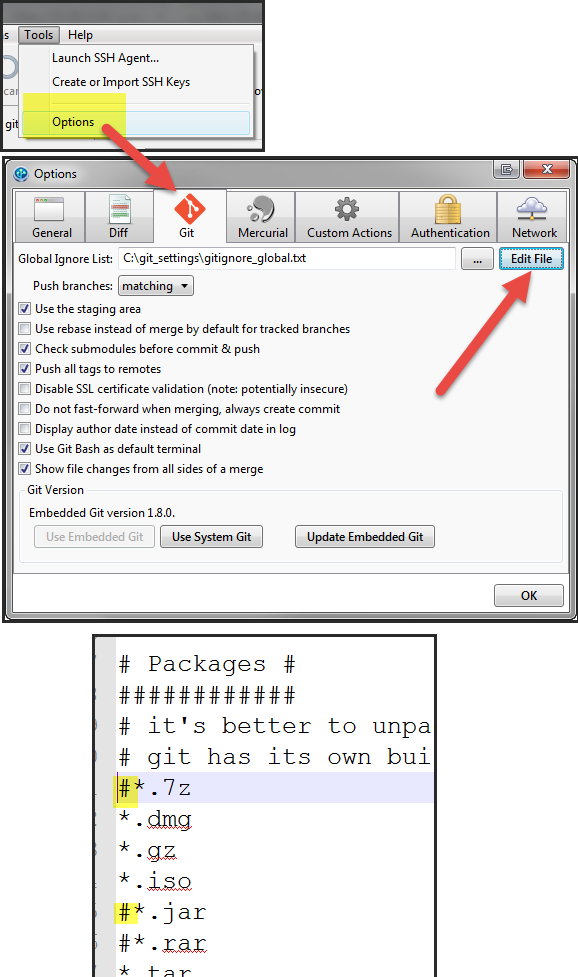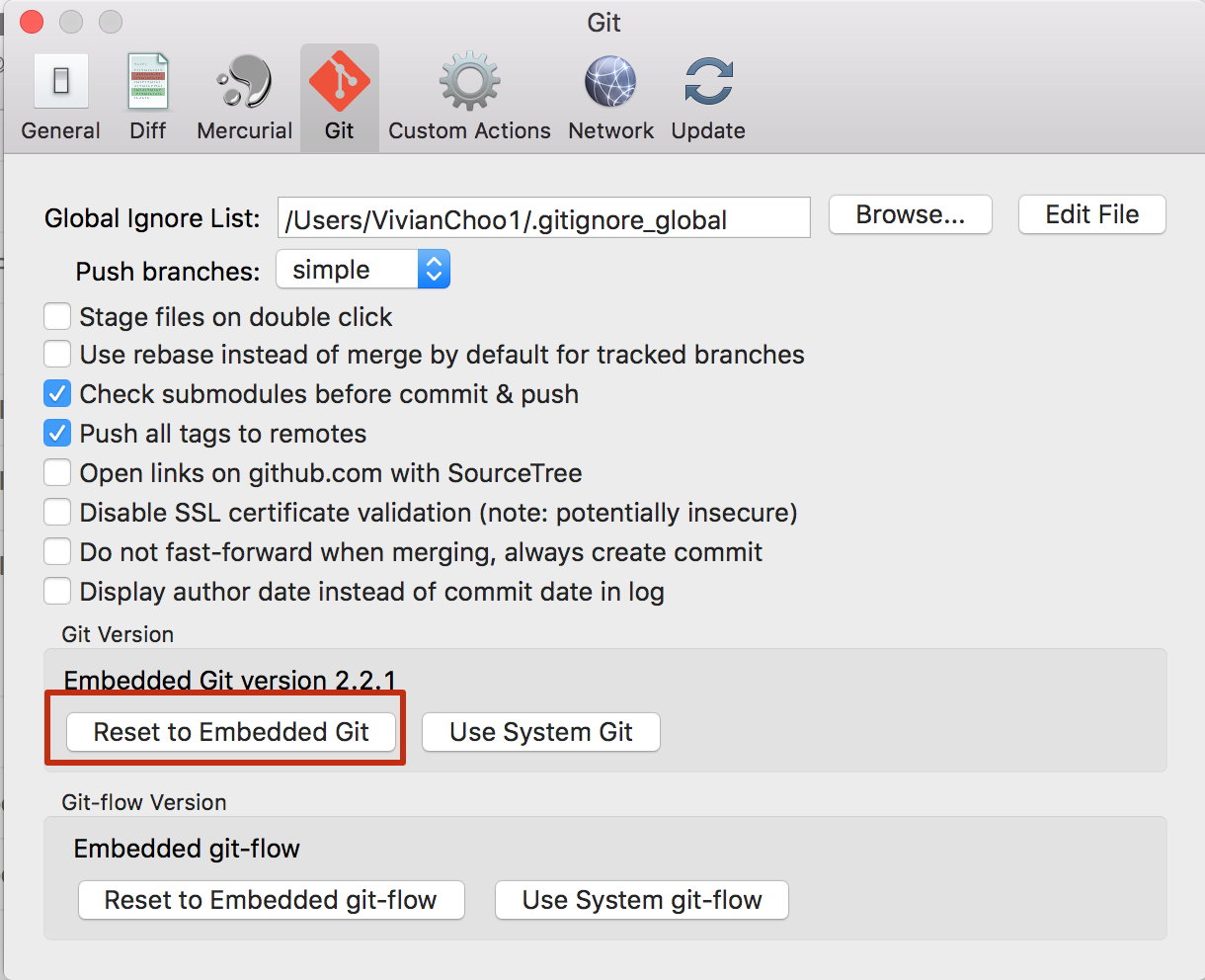

The functions for manipulating hunks and lines now switch depending on what you have selected select lines of code to bring up the line buttons, click anywhere outside the code to deselect and bring the hunk buttons back. Not only does it look much cleaner, it makes better use of the space, with each hunk hunk of code scrolling independently (rather than everything being one big scrolling area), and controls are locked to the edges of the view for easier access. The diff view has been given a complete overhaul both visually and functionally.
#Sourcetree dmg full
While you can still use the right-click context menu on files to access the full gamut of operations, we’ve also added a quick-access panel for the most commonly used actions, just click the ‘…’ button on the right of a file entry: You can switch back and forth between the simple and advanced modes on the context menu: However as soon as you use one of the staging functions, SourceTree will switch to showing the staged and unstaged areas as above, which is what most more advanced Git users will want to see. If you’re new to SourceTree, our default mode for git is simply for you to check the files you want to commit, which is more approachable to people who don’t understand staging yet. You can also use the spacebar to toggle the checkboxes for the current selection if you want to stage / unstage many files at once. You can mark whole files for inclusion in the next commit (stage them in git terms) by checking the boxes in the file list:

We’ve streamlined the commit experience so that it is no longer a separate sheet, but instead it’s built right in to the file status view: This release focuses on improved visual design in areas such as the file status and diff views, and a much improved, more streamlined commit experience.
#Sourcetree dmg for mac
We’re very happy to announce that the next major update to SourceTree for Mac is now available. SourceTree for Mac 1.9 – Out Now! By Steve on April 29, 2014


 0 kommentar(er)
0 kommentar(er)
